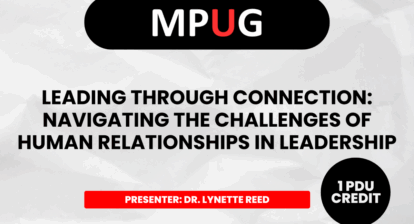You cannot control stakeholders, but you can control their level of engagement. Learn the 9 critical stakeholder roles in IT projects and 8 proven strategies to align expectations and drive project success.

Introduction
You cannot control stakeholders, but you can control their level of engagement. This allows you to oversee the stakeholder’s expectations related to your project and should be well defined in your overall Communications Plan. Effective stakeholder engagement is the cornerstone of project success, determining whether your deliverables meet expectations and gain the support needed for implementation. In this guide, we’ll explore the 9 critical stakeholder roles in IT projects, 8 proven engagement strategies, and real-world examples from industry leaders like Google and Intel.
Understanding Your Stakeholder Landscape
Stakeholders are all people or entities that are affected by the project in some way—either positively or negatively, either to a high extent or to a low extent. It is important to identify all stakeholders and classify them according to their interest and power that they can have in the project. This classification allows you to decide how to engage each one of them, thereby increasing the probability of project success.
The Hidden Complexity of Stakeholder Networks
Projects have more stakeholders than first appears. These are groups and individuals who either need to be involved with defining the project or need to be communicated regarding the ongoing status of the project. If left alone, many stakeholders would think that the initial Charter or early requirements represent the current project view. As a project evolves, changes occur both within the project and could affect the external environment. To be judged successful, the eventual project deliverable should match the expectations of the stakeholder group.
The IT Project Stakeholder Map: 9 Key Roles
In an IT project, there are several key stakeholders who play different roles throughout the project’s lifecycle. The 9 key roles of stakeholders in an IT project are:
- Project Sponsor: The person or group that provides the financial resources and support for the project. They often have the final say on major project decisions.
- Project Manager (PM): The individual responsible for planning, executing, and closing the project. They ensure the project stays on track and meets its objectives.
- Project Team Members: The individuals who work on various tasks and activities within the project. This includes developers, designers, testers, and other technical staff.
- End Users: The people who will use the IT system or solution being developed. Their needs and feedback are crucial for the project’s success.
- Business Analysts: The professionals who analyze and document business requirements, ensuring the project aligns with organizational goals.
- IT Operations Team: The team responsible for maintaining the infrastructure and systems that support the project. They ensure the IT solution integrates well with existing systems.
- Vendors/Suppliers: External parties that provide products, services, or resources required for the project. This could include software vendors, hardware suppliers, or consulting firms.
- Quality Assurance (QA) Team: The group responsible for ensuring the project’s deliverables meet quality standards through testing and validation.
- Regulatory Bodies: Organizations or authorities that impose regulations and standards the project must adhere to, such as data protection and security requirements.
8 Stakeholder Engagement Strategies
Improving stakeholder expectations in an IT project is crucial for its success. Here are several strategies a PM can use:
- Identify Stakeholders Early: Right from the project initiation phase, identify all key stakeholders. Understand their roles, expectations, and influence on the project.
- Clear Communication Plan: Establish a robust communication plan to ensure stakeholders are informed and involved. Use various communication channels—emails, meetings, dashboards, and newsletters—to keep everyone updated.
- Engage Stakeholders Regularly: Maintain regular interactions with stakeholders through meetings, updates, and feedback sessions. Active engagement helps in building trust and addressing any concerns promptly.
- Set Clear Expectations: Clearly define and document the project scope, deliverables, timelines, and responsibilities. Ensure that stakeholders’ expectations are aligned with the project goals.
- Leverage Technology: Use project management tools and software to streamline communication, collaboration, and tracking. Tools like Microsoft Project, Asana, or Jira can help keep stakeholders informed and involved.
- Manage Conflicts: Take initiative in identifying and resolving conflicts among stakeholders. Encourage open dialogue and address issues before they escalate.
- Provide Training and Support: Offer training sessions or workshops to stakeholders to ensure they understand the project’s technical aspects and their roles in it.
- Show Appreciation: Acknowledge and appreciate stakeholders’ contributions. Recognize their efforts and celebrate milestones together.
By implementing these strategies, a PM can foster a collaborative environment, ensuring stakeholders are satisfied and supportive throughout the IT project.
Stakeholder Engagement Examples
Stakeholder engagement is crucial in IT projects to ensure successful outcomes. Here are some real-world examples (Source: Engagements):
- Cisco’s Diversity and Inclusion Initiatives: Cisco actively engages with its stakeholders, including employees, customers, and community members, to promote diversity and inclusion. They conduct surveys, hold focus groups, and collaborate with external organizations to gather feedback and implement initiatives that foster an inclusive workplace.
- Google’s Project Aristotle: Google conducted a study called Project Aristotle to understand what makes a team effective. They engaged with team members across various departments, conducted interviews, and analyzed data to identify key factors such as psychological safety and clear goals. This engagement helped Google improve team performance and collaboration.
- Intel’s Sustainability Efforts: Intel engages with stakeholders, including environmental groups, local communities, and employees, to develop and implement sustainability initiatives. They hold regular meetings, conduct surveys, and collaborate with external partners to gather input and ensure their sustainability efforts align with stakeholder expectations.
Coming together is a beginning,
Keeping together is progress,
Working together is success.
– Anonymous
Your feedback is always welcome here in the comments, and in the Community Discussion Forum!
Elevate your project management skills and propel your career forward with an MPUG Membership. Gain access to 500+ hours of PMI-accredited training, live events, and a vibrant online community. Watch a free lesson and see how MPUG can teach you to Master Projects for Unlimited Growth. JOIN NOW







